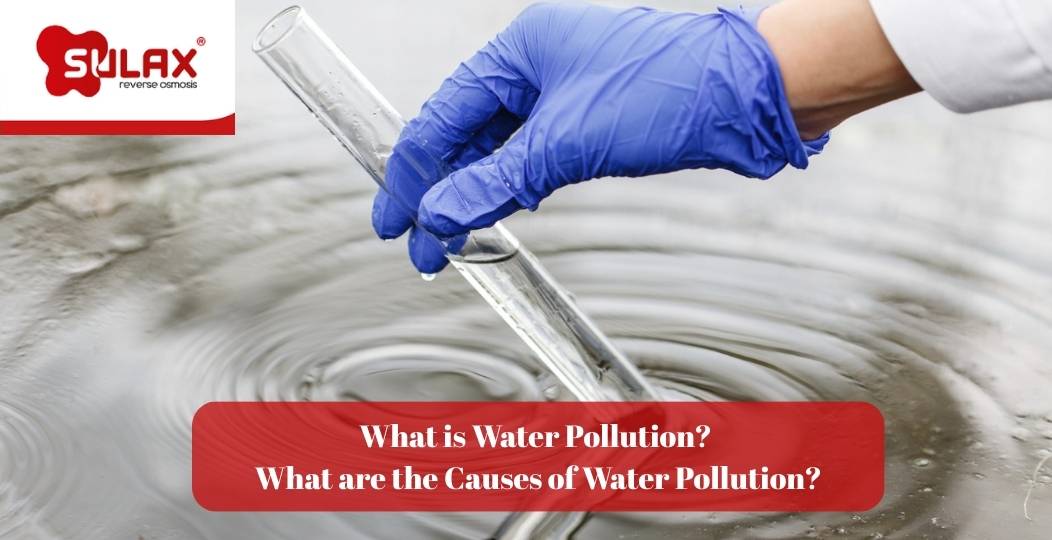Water pollution is the contamination of water resources by natural or human-induced pollutants. These pollutants disrupt the natural structure of water, threaten the health of living organisms, and disturb the balance of ecosystems. Water pollution can affect various water sources, such as surface water (rivers, lakes, seas) and groundwater.
What Are the Causes of Water Pollution?
Water pollution can occur for various reasons. These include:
- Chemical and heavy metal industrial waste
- Domestic waste (oil, detergents, etc.)
- Agricultural pesticides and fertilizers
- Improperly stored wastewater
- Sewage waste
- These types of waste are the main causes of water pollution.
What Percentage of Water Is Polluted?
Globally, approximately 70% of usable water is considered polluted. This percentage varies by region; in developing countries, the rate is much higher due to insufficient treatment systems, while in developed countries, the prevalence of treatment technologies keeps this rate lower.
In Turkey, according to the Municipal Wastewater Statistics published by TÜİK in 2020, the total amount of wastewater discharged by municipalities was approximately 5 billion m³. Only 71.6% of this was treated in advanced or biological treatment plants. This shows that water resources in Turkey still face a serious risk of pollution.
How Does Water Pollution Occur? The Human-Induced Pollution Process
The biggest cause of water pollution is humans. Industrial and domestic waste discharged directly into water leads to the rapid contamination of our oceans, seas, lakes, and rivers. However, if waste is filtered through appropriate wastewater filters before discharge, it is highly possible to significantly reduce pollution.
How to Prevent Water Pollution?
Measures that can be taken to prevent water pollution include:
- Building treatment plants for industrial and chemical waste
- Imposing deterrent penalties on businesses that discharge polluted water without filtration
- Treating domestic waste or delivering it to waste collection facilities
- Reducing the use of plastics that contribute to water pollution
- Educating people and raising awareness, as human activity is the number one cause of water pollution
How Widespread Is Water Pollution Globally?
According to the Global Environment Outlook 6 report published by the United Nations Environment Programme (UNEP), about 80% of the world’s wastewater is discharged into the environment without any treatment. This untreated wastewater significantly threatens drinking water sources, agricultural land, and wildlife, and is considered one of the leading causes of water pollution. You can access the GEO-6 report and detailed data from UNEP’s official page.
This rate puts the sustainability of global water resources at risk and shows that access to clean water is becoming increasingly difficult. In regions where urbanization is accelerating, this rate can reach dramatic levels.
What Are the Consequences of Water Pollution?
Water pollution causes severe harm to nature, especially to human health. Without urgent action, our water resources may become unusable in the near future. Some of the consequences of water pollution include:
- Bacterial infections, cholera, dysentery, and other health issues
- Severe ecosystem damage; disruption of fish, birds, and other parts of the food chain
- Loss of biodiversity as pollution destroys ecosystems
- Contaminated agricultural water causing harmful chemicals to accumulate in soil, leading to soil pollution
Water pollution disrupts the entire economic system—fisheries, tourism, agriculture, food, and beverage industries are all affected.
Notable Examples of Water Pollution
Some notable examples of water pollution in Turkey include:
- Lake Van: Polluted by agricultural pesticides, domestic, and industrial waste; ecosystem under threat.
- Marmara Sea: Industrial waste, domestic waste, and agricultural pollution reduce oxygen levels, harming marine life.
- Çoruh River: Polluted by industrial and domestic waste; hydroelectric plants also affect the ecosystem.
- Kızılırmak River: Agricultural pesticides, fertilizers, and industrial waste mix into the river, lowering water quality.
- Beyşehir Lake: Polluted by agricultural chemicals and domestic waste, harming aquatic life.
- Zeytinburnu Creek (Istanbul): Polluted by industrial and domestic waste, posing a threat to environmental health.
How to Solve Water Pollution?
Some measures to solve water pollution include:
- Treating domestic wastewater and limiting the use of chemical cleaning products
- Upgrading old sewage systems and properly treating wastewater
- Educating the public on water conservation
- Treating industrial waste and adopting clean production methods
- Reducing the use of chemical fertilizers and pesticides to prevent water pollution from becoming soil pollution, and promoting organic farming
Frequently Asked Questions
What Are the Types of Water Pollution?
The types of water pollution include:
- Chemical pollution: Accumulation of chemicals in water, such as oil, detergents, and toxic substances
- Biological pollution: Contamination of water by microorganisms such as bacteria, viruses, and parasites
- Physical pollution: Solid waste (plastic, metal, glass, etc.) entering the water
- Plastic pollution: Plastic waste in seas and oceans that remains without decomposing for long periods, harming fish and other organisms
What Are the Harms of Water Pollution? Which Areas Does It Affect?
- Causes infectious diseases in humans
- Leads to species loss and imbalance in wildlife
- Reduces the quality of agricultural products
- Creates health risks and loss of reputation in the food industry
- Causes unemployment and sector contraction in the economy
Which Countries Experience the Most Water Pollution?
Water pollution is most common in countries such as China, India, Brazil, and the USA. The common feature of these countries is their high population density and uncontrolled industrial activities.

